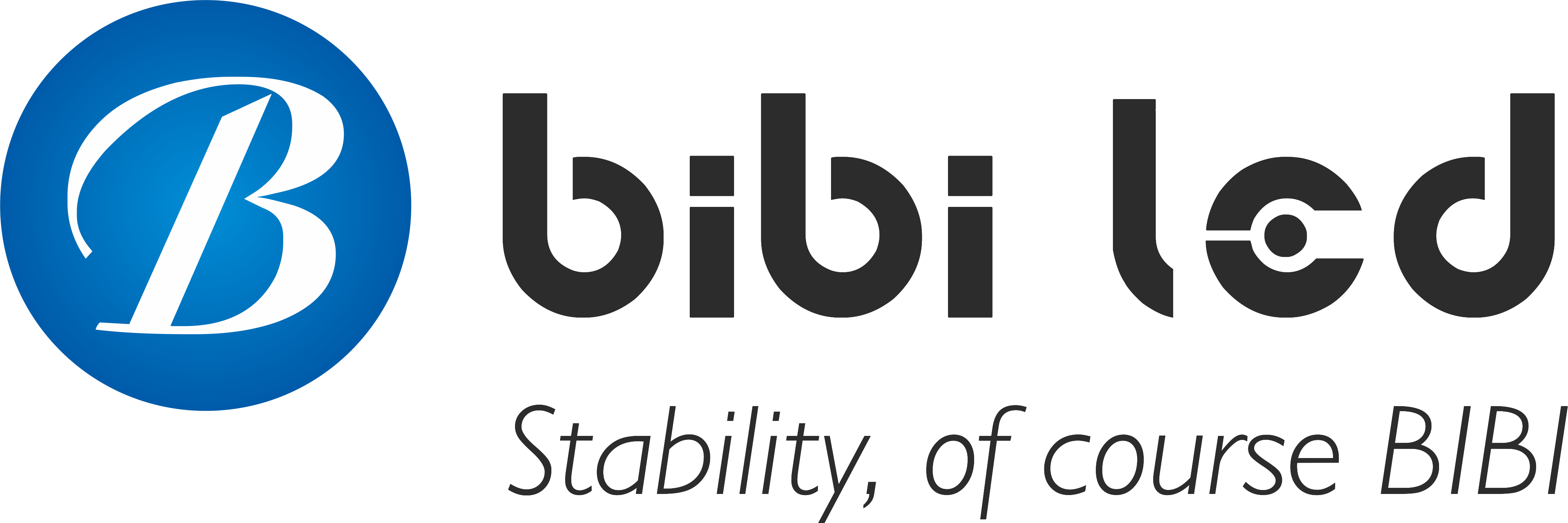序章
In the era of information explosion, how can a small-area LEDスクリーン quickly catch the audience’s attention in a limited space?
A well-designed “visual hook” may be your secret weapon. What exactly is it? And how to create it?
目次
1. Why do small-area LED screens need a "visual hook" more?
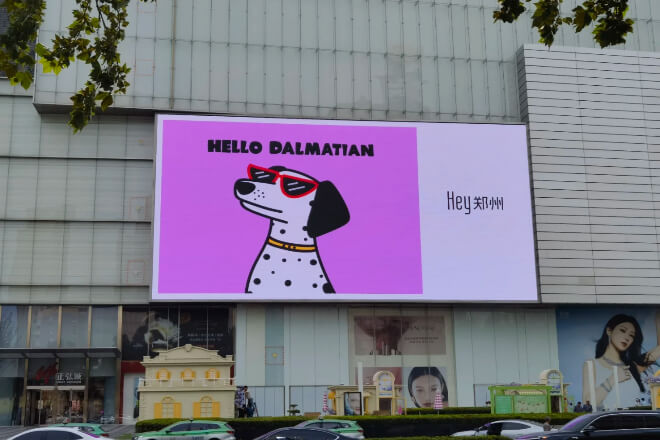
Now everyone’s attention is particularly scattered, and there are noisy and crowded people around, and everyone wants to grab attention.
Compared with large screens, the “influence” of small-area LED screens is limited, and they can’t scare people with big scenes, so they must catch your attention in the first second.
In short, a small screen must rely on something that can “hook people” – people look at it not just with a glance, but stop to look for a few seconds, and even generate some interest.
This “hook” is actually the first step from “attracting your attention” to “making you stay” and then to “inspiring you to act”.
Without this visual hook, small screens are easily ignored by passers-by, wasting precious positions and opportunities in vain.
What’s more, when people are walking or in a noisy environment, they are easily distracted. If the flashing moment does not catch the eye, it is difficult to attract it back.
Therefore, the content design of small-area LED screens must be more precise, the picture must be eye-catching.
And the color and action must be flexible and interesting, so as to truly “hook” people, turn it from “passing by” to “paying attention”, and play its maximum marketing effect.
2. What is the core goal of the visual hook?
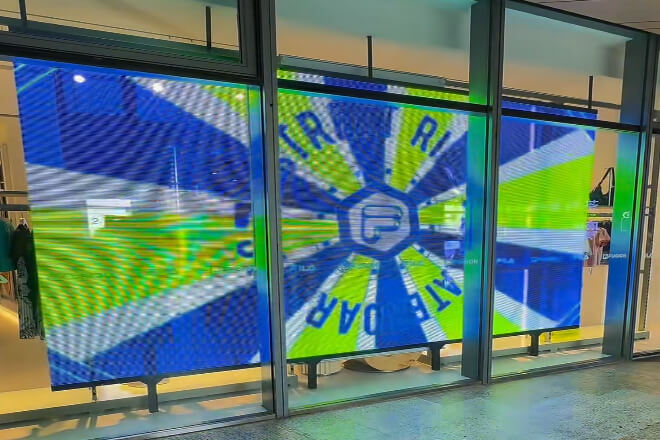
The core goal of the visual hook is actually to grab everyone’s attention in a very short time, convey the information clearly, or stimulate some emotional response in the audience.
Some people have studied that when people face visual information, the first impression is almost determined within 3 seconds.
In other words, the content on the LED screen must “speak clearly” in these few seconds to be remembered; otherwise, it will be easily ignored.
A good visual hook usually includes these 3 points:
1). Focus of the picture, the element that makes people stare at it at first sight.
The color should be bright, the picture should be simple, and people should not be dazzled. Let the eyes find the key points immediately.
2). Emotional arousal
It is not enough to attract attention, but also to make people feel something in their hearts.
Through pictures, colors, and texts, people will feel interested, curious, hungry, or happy, and want to watch for a few more seconds.
3). Action hints
Finally, tell everyone what to do next. For example, prompts such as “scan the code for discounts” and “buy now” help everyone complete the conversion from “reading → action”.
For example, the LED screen of a roadside fast food restaurant does this: the LED screen shows a tempting photo of food in 3 seconds, with bright colors, and looks like eating, which is the focus of the picture.
The text reads “Today’s special offer” and “Try it now”, which directly arouses people’s appetite and interest.
Finally, it also tells you to “scan the code to get a coupon”, taking you from “taking a look” to “walking in to pay” step by step.
This is the typical use of visual hooks-using pictures and emotions to quickly catch you, make you stop, and even take action.
3. How can a visual hook for a small LED display screen be created through composition?
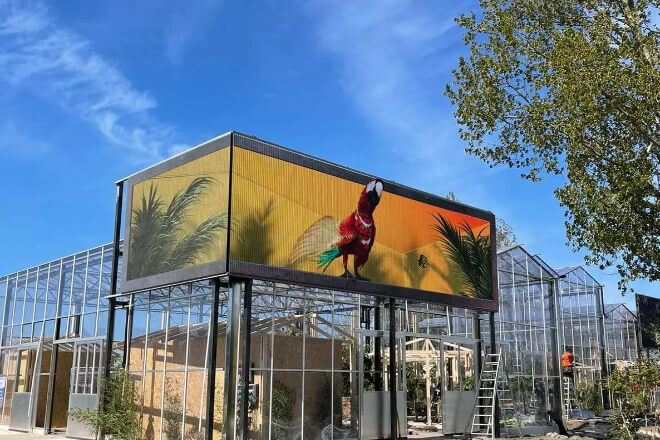
Small-area LED display screens have limited space. If you want to catch the audience’s attention in just a few seconds, composition design is very important.
Simply put, it is to make the picture “focused and breathable” so that others can understand what you want to express at a glance.
And it will not be ignored after a flash. Let’s talk about how to create an effective visual hook in a few steps:
On LED display screens, it is particularly useful to put the most critical elements in the center of the picture.
Everyone’s eyes are used to looking at the middle of the screen first, so whether it is the brand logo, the main product, or the promotional information, it should be placed in the golden position of vision.
This can ensure that the audience can see the key points at a glance and will not be distracted.
Although the LED display screen is small, the content does not have to be crowded.
Appropriate white space or gaps, that is, negative space, can make the picture more layered and more visually comfortable.
Negative space makes the key elements more prominent and also prevents the audience from feeling dazzled when watching, increasing the overall clarity and readability.
Using a sharp color contrast is an effective way to make LED display screens eye-catching. For example, red with white, yellow with black.
This strong color contrast makes the picture jump out and is easy for passers-by to notice.
The brighter the color, the clearer the layers, and the more obvious the visual hook effect.
Pure static pictures tend to be boring over time, so dynamic elements are added to the LED display screen.
For example, slowly appearing text and flashing icons can make people’s eyes move and stay.
The combination of static and dynamic not only increases the vitality of the picture but also makes the information easier to remember.
In general, the visual hook of a small LED display screen is not to simply cram all the information in, but to rely on clever composition design.
Put the focus on the center, leave negative space, use sharp color contrast, and add a little dynamic effect to successfully catch the audience’s eye in just a few seconds, completing the whole process from “interception” to “stay” to “conversion”.
4. Dynamic images vs. static images: Which one is the best visual hook?
When it comes to the visual hook of small-area LED display screens, dynamic images and static images actually have their own advantages.
However, if you really want to catch people’s eyes, dynamic effects are more likely to break everyone’s “visual inertia”.
After all, people look at things when they walk, and static images are easily ignored, but when they move, their eyes can’t help but look at them for a few more seconds.
However, the space of a small screen is limited, and the whole screen cannot be animated; otherwise, it will make people dizzy.
The combination of “partial motion + full screen stability” is a trick that makes people feel comfortable and eye-catching.
The main body of the picture remains stable so that people can see clearly, and a small range of dynamic effects is used locally, such as flashing, gradient, or slight displacement, which can make the key areas more prominent.
1). Several reliable dynamic effect success cases
1.1). Toshiba screen in Times Square, New York
Although the overall size is large, they often use local dynamic embellishments, such as slight flashing of product logos.
Or gradual appearance and disappearance of text, to attract people’s attention, but not to dominate the main body.
This “partial motion” combined with a stable background makes the advertisement more attractive and increases the viewing time.

1.2). Small-area LED advertising in London, Piccadilly Circus
Although the LED display screen in London Piccadilly Circus is a large area, it is divided into many small windows at a time to play different advertisements, just like a small-area LED display screen.
In a promotion, Nike used a small-area LED screen to show the details of the shoes. The animation of the shoelaces slowly tightening made people unable to help but watch for a few more seconds.
The background image remains static, the overall picture has a strong sense of hierarchy, and the audience feedback is very good.
In summary, the dynamic images on the small-area LED display screen are indeed a weapon to catch the eye, but don’t overdo it.
Reasonably match the static picture and make a rhythm of “combining movement and stillness”, which can not only make the content clear.
But also keep it fresh, and truly capture the audience in 3 seconds to achieve the goal of “interception → stay → conversion”.
5. What kind of text can play the role of "visual hook"?
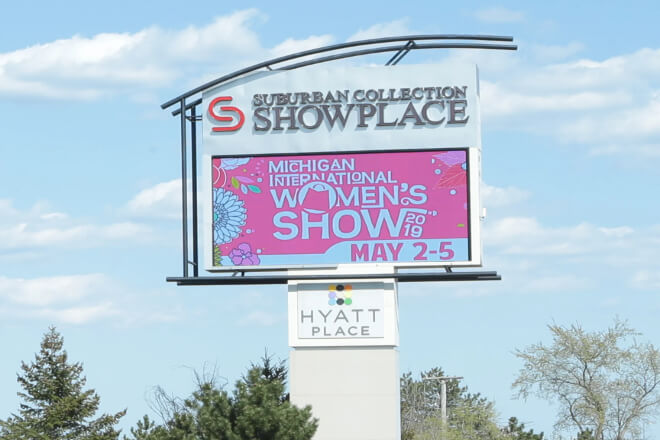
If you want the text on the LED display to truly become a visual hook, the key is to be concise, powerful, specific, and with clear action instructions.
Modern people read things quickly, and their attention is scattered. No one cares about text that is too long, and abstract expressions are more likely to be ignored.
The text should be understandable at a glance and even arouse the urge to act immediately.
For example, many screens say “new products are on the market”, which sounds very ordinary and has no sense of urgency. But if it is changed to “only today, get ahead of others”.
It immediately makes people feel that time is limited and opportunities are rare, and they want to hurry up to understand or buy.
Here, “get ahead of others” is a specific verb that is more powerful than the empty “new products are on the market”.
In addition, the visual performance of the text is equally important. The font size should highlight the key information, and the layout should be simple and orderly to avoid dense text that makes people feel at a loss.
The main title with a large font first attracts the eye, and the slightly smaller subtitle guides the line of sight downward to help the audience form a natural reading path.
The color contrast should also be obvious to avoid mixing with the background.
There are also animation effects when the text appears, which will greatly affect the audience’s attention.
For example, dynamic displays such as gradual display, bounce, and slide-in can make the text more rhythmic and catch the eye.
Especially on small-area LED displays, reasonably controlling the speed and method of animation can make the text move interestingly but not steal the focus of the content, and make people stop and watch for a few more seconds.
In general, as a visual hook, the text should not only be concise and specific but also properly coordinated with the visual design.
Only in this way can the information be quickly conveyed within 3 seconds, allowing the audience to stop and complete the transition from “taking a look” to “acting”.
6. Is creative design a way to create a "visual hook"?
Visual hooks do not only rely on the pictures and text on the LED display. Sometimes, with the help of the environment and creative design of the display itself, it can bring very amazing visual effects.
This type of design combines virtuality and reality to allow the screen content to interact with real objects, creating a unique visual impact and catching the audience’s attention.
A good example is the creative display of the game “Honkai Impact 3: Star Dome Railway” in the exhibition.
The organizer installed transparent LED display screens on the left and right sides of the mecha model in the game, and the screens dynamically displayed the fluttering effect of the mecha ribbon.
This design cleverly “extended” the elements in the game through the real screen, making the static model instantly dynamic.
This combination of virtual and real forms of expression attracted a large number of game fans to watch on the spot. Many viewers took photos and shared them, and even caused a hot effect on the Internet.
Through the dynamic effect of the transparent LED screen, the brand successfully created a strong visual hook that is difficult to ignore.
Especially in the application of small-area LED display screens, creative interaction with the surrounding environment.
And physical objects breaks through the limitations of screen size, which not only enhances visual appeal but also enhances the brand’s memory point.
Creative design is undoubtedly an important tool for creating visual hooks, making LED display screens more vivid and interesting, and helping brands tell stories and attract more attention.
7. 結論
It is not difficult to create an effective “visual hook” that allows small-area LED screens to instantly attract attention, convey information, and inspire action.
The key lies in precise content design, clever composition layout, and creative dynamic effects.
最後に、LEDディスプレイについてもっと知りたい方は、 お問い合わせください.
